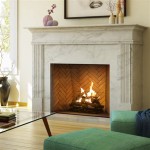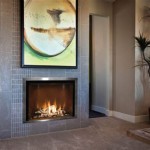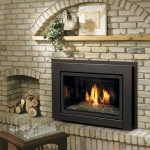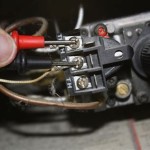How to Reface Fireplace with Stone Veneer Design
Refacing a fireplace with stone veneer can dramatically transform a living space, adding visual appeal and a sense of warmth. This project, while achievable for a determined DIY enthusiast, requires careful planning, preparation, and execution to ensure a lasting and aesthetically pleasing result. This article will detail the necessary steps involved in refacing a fireplace with stone veneer, from initial assessment to final finishing touches.
Assessing the Existing Fireplace Structure
Before embarking on any refacing project, it is crucial to thoroughly assess the existing fireplace structure. The primary concern is ensuring the structural integrity and suitability of the fireplace for supporting the added weight of the stone veneer. Inspect the firebox and flue for any cracks, damage, or deterioration. These issues must be addressed before proceeding with the refacing. Mortar joints should be solid, and any loose or crumbling areas need repair. If the fireplace has a wood surround or mantel, carefully consider whether they will remain in place or be removed. Removal may involve additional structural considerations, such as supporting the surround or mantle's weight. The type of existing material is also a factor, as some surfaces require more extensive preparation than others to ensure proper adhesion of the veneer.
In addition to structural integrity, confirm that the fireplace complies with local building codes and regulations. These regulations often dictate the type of materials that can be used, clearances required around the firebox, and methods for installation. Failure to comply with these codes can result in costly rework or fines. Consultation with a qualified building inspector or contractor is recommended to verify compliance and address any potential concerns.
Consider the overall design aesthetic of the room and how the stone veneer will complement the existing decor. Evaluate different stone veneer styles, colors, and textures to find the best match. Ensure the selected veneer is suitable for fireplace applications, specifically designed to withstand high temperatures and exposure to smoke and soot. Not all stone veneers are created equal; some are specifically manufactured for interior, exterior, or fireplace applications.
Preparing the Surface for Stone Veneer Application
Proper surface preparation is paramount for a successful stone veneer installation. The existing surface must be clean, sound, and able to provide a solid bond for the mortar and stone veneer. The first step is to thoroughly clean the existing surface, removing any dirt, dust, grease, paint, or loose debris. A wire brush, scraper, and pressure washer (if appropriate) can be used to achieve a clean surface.
If the existing surface is non-porous, such as painted brick or concrete, it will need to be roughened to create a mechanical bond for the mortar. This can be achieved by using a grinder with a concrete grinding wheel or by applying a bonding agent specifically designed for non-porous surfaces. Follow the manufacturer's instructions for the bonding agent application, ensuring proper coverage and drying time.
For a more secure and durable installation, it is generally recommended to apply a scratch coat of mortar over the prepared surface. A scratch coat is a thin layer of mortar that is applied to the surface and then scratched with a notched trowel to create grooves for the stone veneer to adhere to. The scratch coat should be allowed to cure for at least 24 hours before applying the stone veneer. This provides a consistent and textured surface for the veneer, enhancing adhesion and preventing slippage.
Installation of a metal lath is often considered for ensuring long term adherence of the stone veneer. Metal lath provides additional mechanical bonding and is especially beneficial when dealing with challenging surfaces or heavier stone veneer. Metal lath is attached to the prepared surface using masonry nails or screws. Overlap the seams of the lath by at least one inch and ensure it is securely fastened to the substrate. After attaching the lath, apply a scratch coat of mortar to embed the lath and create a solid base for the stone veneer.
Installing the Stone Veneer
With the surface properly prepared, the stone veneer installation can begin. Before starting, dry-lay the stone veneer on the floor to plan the layout and arrangement. This allows for experimentation with different patterns and ensuring the desired aesthetic is achieved. Consider the size, shape, and color variation of the stones when planning the layout. It is often desirable to mix different sizes and colors to create a more natural and random appearance. Cut any necessary stones to fit corners, edges, or around existing features. A wet saw with a diamond blade is recommended for cutting stone veneer. Safety glasses and hearing protection should be worn when operating a wet saw.
Mix the mortar according to the manufacturer's instructions. Use a mixing drill and bucket to ensure a consistent and lump-free mixture. The consistency of the mortar should be similar to that of peanut butter – thick enough to hold its shape but pliable enough to be easily worked with. Apply a generous layer of mortar to the back of each stone veneer using a trowel. Ensure the entire back surface is covered with mortar, paying particular attention to the edges. Press the stone veneer firmly against the prepared surface, wiggling it slightly to ensure good contact with the scratch coat or metal lath. Excess mortar will squeeze out from the edges of the stone veneer. This excess mortar can be removed with a pointing tool or small trowel.
Maintain consistent spacing between the stones to create the desired joint width. Spacers can be used to ensure uniform spacing. As the stones are installed, periodically check for level and plumb using a level. Adjust the stones as needed to maintain a straight and even surface. When working around corners, use corner stones specifically designed for stone veneer. These stones have a 90-degree angle that allows for a clean and professional-looking corner. If corner stones are not available, the stones can be mitered to create a corner joint.
For a dry-stacked look, eliminate the mortar joints entirely. Instead, fit the stones tightly together, using shims if necessary to maintain a level surface. Pay careful attention to the alignment of the stones, ensuring they are flush and even. For a mortared joint, allow the mortar to cure for at least 24 hours before tooling the joints. Tooling the joints involves shaping the mortar with a pointing tool to create a consistent and aesthetically pleasing finish. Common joint styles include concave, V-shaped, and flush joints. After tooling the joints, brush away any loose mortar with a soft-bristled brush.
Sealing and Maintaining the Stone Veneer
After the stone veneer is installed and the mortar has fully cured, consider applying a sealant to protect the stone from staining and moisture damage. A sealant will also enhance the color and appearance of the stone. Choose a sealant specifically designed for stone veneer and follow the manufacturer's instructions for application. Apply the sealant evenly, using a brush, roller, or sprayer. Allow the sealant to fully dry before using the fireplace.
To maintain the appearance of the stone veneer, regularly clean the surface with a mild detergent and water. Avoid using harsh chemicals or abrasive cleaners, as these can damage the stone. Inspect the mortar joints periodically for any cracks or damage. Repair any damaged joints with fresh mortar.
The installation of a non-combustible mantel shelf above the fireplace opening is essential for safety. Maintaining proper clearances between the firebox opening and any combustible materials is crucial in ensuring safe fireplace operation. These clearances are typically specified by local building codes and the fireplace manufacturer. These clearances minimize the risk of fire and ensure safe and enjoyable use of the fireplace.

Refacing A Fireplace With Stone Veneer Horizon

Reface Your Old Fireplace With Stone Veneer For A New Look Solutions Maine

Reface A Fireplace With The Look Of Stone Or Brick Barron Designs

How To Reface A Brick Fireplace With Stone 5 Simple Steps

Reface Your Old Fireplace With Stone Veneer For A New Look Solutions Maine

How To Update Your Fireplace With Stone Evolution Of Style

Remodel Your Fireplace In Natural Stone Use

Fireplace Remodel Stone Veneer Over Brick

How To Update Your Fireplace With Stone Evolution Of Style

Tips For Cultured Stone Fireplace Refacing Mortar City Masonry
Related Posts








